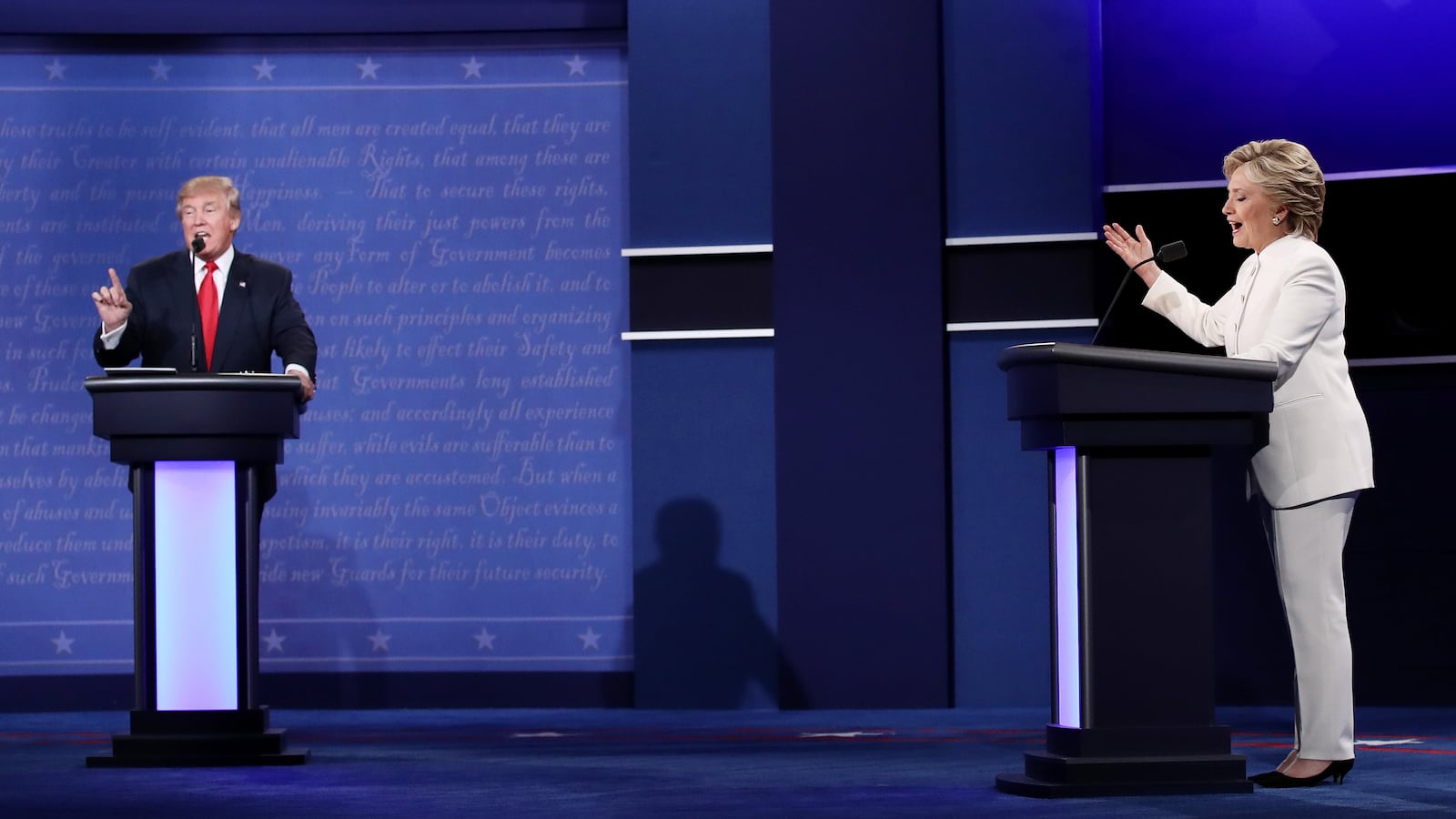Students living in areas that voted for President Trump faced more bullying after the 2016 election, according to new research released Wednesday.
The study offers some hard evidence that the post-election months were a more fraught time in many schools — backing up the stories of individual teachers and students. But the effects were not spread evenly: In communities favoring Trump, reports of bullying were 18 percent higher than in communities that voted for Hillary Clinton, the study found. Reports of peers being teased or put down because of their race or ethnicity were 9 percent higher in those places.
Overall, 17 percent of students in areas that voted for Clinton reported being bullied, compared to 20 percent of students in areas that voted for Trump.
“We found differences in teasing and bullying rates that were linked to voting preferences, which we didn’t see prior to the 2016 presidential election,” said Francis Huang, an associate professor at the University of Missouri, who conducted the study with University of Virginia professor Dewey Cornell.
Huang and Cornell examined the survey responses of more than 155,000 seventh- and eighth-grade students across Virginia’s 132 school districts. Students were asked if they had been bullied at school and if they had observed harassment of others, including students being targeted due to their race or ethnicity. The data was collected in 2013, 2015, and 2017.
Their conclusions are limited for a few reasons. The surveys don’t say the race or ethnicity of the students being bullied, making it impossible to know how closely the incidents were tied to the derogatory language now-President Trump and his supporters used during the campaign about Mexican immigrants and Muslims, for instance.
And the data, published in the peer-reviewed Educational Researcher, only shows a link between bullying and voting patterns — it doesn’t prove cause and effect.
“Our data show there could be a relationship, but more research is needed to know that,” Huang said. “But what we can say is that bullying continues to be a problem in schools that’s only increased in the eyes of these students.”
There still isn’t much research yet to confirm the depth of such a “Trump effect,” said Deborah Temkin, director of education research for the nonpartisan Child Trends. She previously oversaw federal efforts to combat bullying in the Obama administration.
“This is a really complicated thing to disentangle,” Temkin said. “There can be so many factors into why bullying is happening and without a hyper-controlled study — which is hard to do when you may or may not have a presidential election in the mix — it’s hard to show causation.”
Virginia has taken steps to combat bullying in schools, before and after the election. A law implemented in 2017 requires principals to notify the parent of any student involved in bullying of the status of any investigation within five school days.
While schools do submit harassment data to the federal government every couple of years, the nature of such incidents isn’t made clear in those reports. Moreover, there is no uniform collection of hate crimes or bias incidents in schools by any federal agency, making it a challenge to understand how often students are targeted because of their identity.
A national data set released last year showed that bullying rates held steady in 2017, Temkin noted, adding that researchers should be cautious about assigning blame for any uptick fully to Trump or political rhetoric.
Indeed, Huang and Cornell found that bullying was present throughout the state of Virginia — a battleground state that Clinton won by 5 points.
School officials have publicly expressed concern in recent years about how President Trump’s language and behavior, including his reliance on false claims, may be affecting students’ outlook on what is socially acceptable. That presents new challenges for teachers pushed to address it.
“It is harder to have students behave respectfully toward one another when the nation’s chief role model consistently does the opposite,” Richard Stopol, the president of NYC Outward Bound Schools, wrote last week in the New York Daily News. “Through words and actions, he is profoundly affecting how teachers see their role and influencing both how and what they teach. With those words and actions, he is posing immense challenges that educators across the country are having to reckon with.”
Temkin said the research should push teachers and school administrators to acknowledge that what’s happening in politics doesn’t stay at home with their students.
“We have to be thinking of how the actions of adults transfer onto the behavior of kids as kids are always looking at how adults are acting toward others,” Temkin said. “So yes, more research is needed to see how deep these relationships go, and from what we see here in the study is a sustained need for bullying prevention in schools.”


